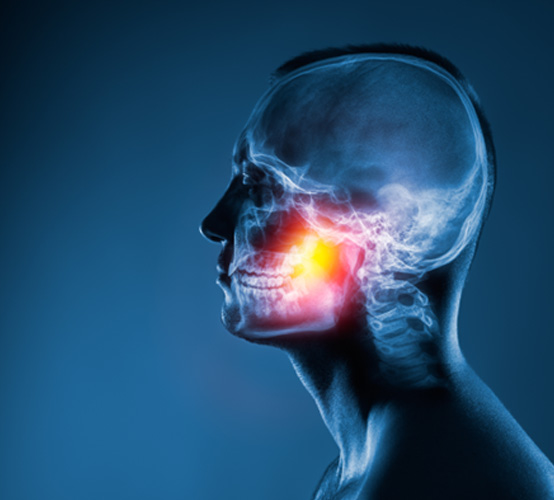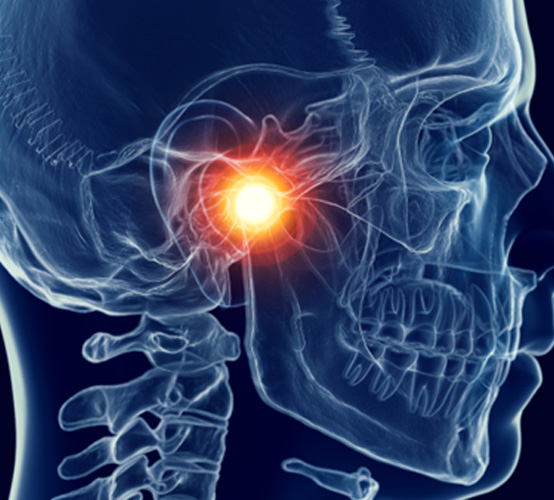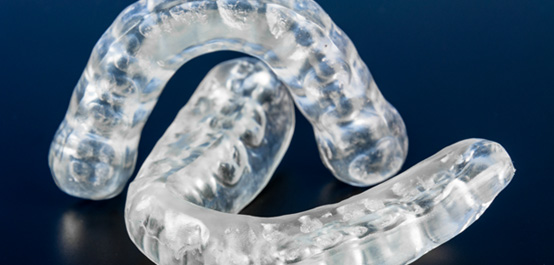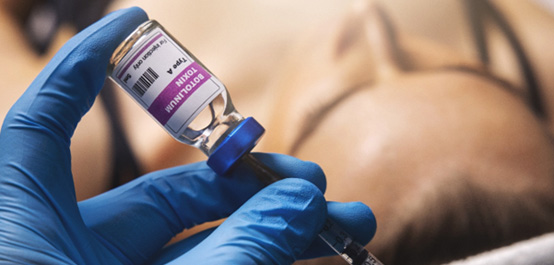TMJ Treatment – Owasso, OK
Finally, Much-Needed Relief from Jaw Pain
As a Fellow of the Academy of General Dentistry, Dr. Gaches has extensive training and experience in a variety of dental disciplines, including TMJ disorder. He regularly sees patients experiencing debilitating jaw pain and chronic discomfort caused by TMJD, and it’s his goal and priority to help everyone find relief. That’s why he offers both immediate and long-term non-surgical TMJ treatments in Owasso. To learn more about the services on this page or schedule a consultation, contact our team at Infinite Smiles Dentistry today.
Why Choose Infinite Smile Dentistry for TMJ Treatment?
- Fast Pain Relief from TMJ Symptoms with BOTOX
- Customized Occlusal Splints to Protect from Teeth Grinding
- Putty-Free & Precise Digital Impression System
What is TMJ Disorder?

TMJ disorder is a condition that affects the temporomandibular joints, which are the two joints that hinge your lower jaw to your upper jaw and skull. They’re encased by multiple important nerves and muscles that all work together to help you chew, speak, and easily move your mouth. When the joints become painful or aren’t functioning properly, it can lead to a variety of uncomfortable symptoms and impact your dental and physical health.
Symptoms of TMJ Disorder

Keep an eye out for these common symptoms of TMJ disorder:
- Clicking and popping of the jaw
- Pain in and around the jaw joints
- Difficulty opening and closing your mouth
- Aches and pain in the neck and shoulders
- Ringing in the ear
- Bruxism, or nightly grinding and clenching of the teeth
- Noticeable change in the bite
If you notice any of these signs, we encourage you to schedule an examination with Dr. Gaches so we can get to the bottom of what’s causing them. With our high-quality digital imaging, we can diagnose the issue at-hand and provide thorough, personalized treatment.
Types of TMJ Treatment

Based on Dr. Gaches thorough examination of your symptoms and facial anatomy, our team at Infinite Smiles Dentistry will be able to complete an effective, tailored treatment plan. Our primary goal is to make sure that you don’t have to live in pain!
Occlusal Splint

An occlusal splint is a customized oral appliance that can be worn at night to shift the jaw into its ideal position. It can also protect against harmful side-effects of TMJ disorder, like teeth grinding. With regular use, you’ll notice that your symptoms will become a less prominent part of your life.
Equilibration/Occlusal Adjustment

Jaw pain and discomfort can be caused by improperly fitted or made dental restorations. In these cases, equilibration may be recommended. Dr. Gaches will measure your bite and determine whether a dental crown or filling needs to be altered in order for force to be evenly distributed between both jaw joints.
BOTOX® for TMJ Treatment

For patients who suffer from chronic jaw pain, we also offer more immediate results with BOTOX injections. These injections will be administered in the muscles surrounding the jaw joints, allowing them to relax and smooth-out. This will prevent headaches and neck and shoulder tension that often arises due to TMJ disorder.
TMJ Treatment FAQs
Can TMJ Be Cured Permanently?
While discomfort associated with TMJ disorder sometimes can go away on its own over time, if your symptoms are starting to impact your daily life, you should visit a professional for treatment.
Some TMJ therapy methods such as BOTOX can provide temporary relief; however, these results aren’t usually permanent.
Occlusal splints and occlusal adjustments / equilibration are designed to permanently address jaw tension, misalignment, or other underlying causes for TMD, and can thereby provide lasting relief.
How Long Does It Take for a TMJ Splint to Work?
Occlusal splints for TMD are typically worn to bed each night. With these devices, you may notice your symptoms begin to diminish very quickly; however, they won’t disappear all at once. It takes time for your temporomandibular joints and the areas surrounding your jaws to adjust to their new, healthier positions.
After about six weeks, most patients experience a noticeable improvement, but not full relief of their symptoms. It can generally take between three and six months for an occlusal splint to completely resolve TMD discomfort. That being said, every patient is different, and some people may experience recovery times that are either much shorter or even much longer than that.
Can TMJ Be Treated Without Surgery?
Yes! In fact, the National Institutes of Health recommend using the most conservative and non-invasive methods possible when treating a TMJ disorder.
Surgery for this condition involves making permanent changes to the jaw and nearby anatomy and is typically only recommended as a last resort. In most cases, TMD can be successfully treated with less invasive methods, such as occlusal splints, equilibration / occlusal adjustments, and BOTOX injections.
Are TMD and TMJ the Same Thing?
The terms TMJ and TMD are often used interchangeably. However, there is a very important distinction between the two.
TMJ stands for temporomandibular joint, the joint that controls movement of your lower jaw. This is part of your body, and not a medical condition.
TMD, on the other hand, stands for temporomandibular joint disorder or temporomandibular joint dysfunction. This is what occurs when the temporomandibular joint is damaged or inflamed.
Because TMJ is sometimes used to describe TMD it is important that you pay attention to the context of the information you’re reviewing so you can understand the real meaning behind it in that instance.
